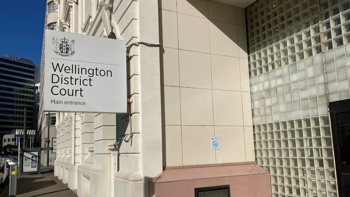KEY POINTS
- Cyclone Gabrielle, now a “severe category three storm”, is forecast to be one of the most serious storms to hit NZ this century, bringing up to 300mm of rain and 150km/h winds that could cause widespread damage to North Island regions. Severe gusts could damage buildings, down trees and cause power cuts
- Large waves and a storm surge are expected to affect northern and eastern coastlines from Sunday. Massive waves between five and seven metres or more have been predicted, and people are being warned to stock at least three days’ worth of supplies, including medication, water and food
- Secondary schools around Auckland, especially those affected by the Anniversary Weekend flooding, will this weekend be considering whether to close campuses on Monday or Tuesday
The tropical cyclone hurtling toward New Zealand is now expected to bring dangerous conditions to more North Island regions, and parts of the South Island.
The latest MetService update now shows the Category 3 Cyclone Gabrielle, packed with 140km/h plus winds and a month’s worth of rain, will now impact from the top of the North Island to the top of the South for the first part of next week.
Speaking at an update today, Auckland Emergency Management’s Rachel Kelleher said they continue to work with partner agencies to ensure anything that can be done to prepare for the cyclone is being done.
Kelleher said as well as continuing to work on the current flood response, they are finalising a number of civil defence centres and evacuation shelters for people and their pets.
The locations will be available on the Auckland Emergency Management website when they are confirmed.
She asked people to check on neighbours, especially the elderly and vulnerable.
She said they wanted to remind people the impact of this weather system may be different to late January’s flooding, and there may be an additional risk from storm surges.
She acknowledged the “immense efforts” of emergency response teams.
She said trees could block roads and people should think ahead about how they would cook food without power.
“Now is the time not to be complacent,” she said.
Kelleher said sandbagging can be used to block doorways, drains and other areas of properties for a short period of time. But other things include clearing gutters and drains.
Sandbags can be purchased from hardware stores and there will be limited stocks available through the agency and locations are available on the Auckland Emergency Management Website.
MetService meteorologist Georgina Griffiths said the cyclone is currently “behaving”.
She said Monday and Tuesday were the two days Aucklanders in particular “should prepare for now”.
She said the worst-case scenario is the cyclone tracks “pretty close” to Auckland.
However, even if it is further away she said we will still see impacts in Auckland due to existing vulnerabilities and its reach.
Griffiths said the most impactful weather would be later Monday and Tuesday.
All of the region is at risk of impactful severe gales on Tuesday, she said.
Given the saturated soils, she said the winds were a problem for trees and powerlines.
She asked Aucklanders to tie down objects such as trampolines, and Monday and Tuesday are when Auckland can expect heavier rain.
Their concern, she said, was exacerbating existing slips.
They will not know until Sunday which areas in Auckland will be most impacted by the rain, she said.
Lastly, she told reporters “heavy heavy” swells would be coming Monday and peaking Tuesday.
If the cyclone comes west of the Coromandel, she said they expect a surge in the eastern coastline.
Fire and Emergency urged people to spend time looking around their properties, looking at their roofs and cleaning their gutters.
They urge people to stay off the roads and not drive on the roads through flood waters as it is hard to judge the depths.
Their biggest request is once the storm begins, people should only 111 if there is a life at risk.
Auckland Transport executive general manager Stacey van der Putten said safety was their number one priority.
Currently, she said 15 roads were closed across the region.
In addition, and based on their knowledge, they are publishing an extensive list of roads they know are vulnerable to flooding and strong winds.
She said the harbourmaster has also issued an alert to boaties in preparation for the cyclone.
Auckland Council’s building consents manager Ian McCormick said their geotechnical advice is the cyclone may cause new slips to fall or reactivate new slips.
He said people should stay out of buildings with red placards and those with yellow placards should follow the advice on the placard and out of an abundance of caution stay out during the event.
He encouraged people with concerns about their houses to move out until the end of the event.
McCormick again said the calls were precautionary and not driven by specific concerns about certain properties.
In terms of danger signs, he said new cracking of ground around the home, water strings and loss of water were signs to make arrangements to be somewhere else.
Police Auckland acting district commander Grant Tetzlaff said in the event of severe weather to stay off the road.
Tetzlaff said they are aware of discussions about burglaries in flood-damaged properties.
He said there have been some arrests for burglaries at flood-damaged and undamaged homes.
He said they have become aware of anecdotal reports of people falsely representing themselves as council workers, and people should report this to the police if they feel unsafe.
Secondary schools around Auckland, especially those affected by the Auckland Anniversary Weekend flooding, will this weekend be considering whether to close campuses on Monday or Tuesday because of the coming cyclone.
Auckland Secondary Schools Principal’s Association president and Orewa College Principal Greg Pierce said his school was at sea level and prone to flooding so he and the board members would be keeping an eye on the weather forecast over the weekend.
They would make a call by Sunday evening about whether to close the campus and revert to online classes on Monday.
This morning MetService said monster waves between 5 and 7 metres or more and severe gales were in store for parts of the North Island.
Damage caused by the gusts may be widespread, from Northland to Wellington, and could blow debris, down trees, damage buildings and cause power cuts.
The agency warns of storm surges from 0.4 to 0.5 metres and dangerous coastal inundation, particularly from Northland to Bay of Plenty and the East Coast of the North Island.
There is a heavy rain watch in place for 59 hours from 1am Sunday to noon Tuesday for Northland and Auckland including Great Barrier Island.
“Rainfall amounts may reach 200 to 300mm or more during this time.”
A heavy rain watch has also been issued for 53 hours for the Coromandel Peninsular from Sunday at 10am, a 43 hour warning for Gisborne from 3pm Sunday and a 48 hour warning from 6am Monday for Hawke’s Bay.
A strong wind watch is in place for 60 hours from noon Sunday for Northland and Auckland north of Whangaparaoa and from 6pm that day for 54 hours a warning is in place for Auckland from Whangaparaoa southwards, and Coromandel Peninsula.
“A significant period of severe gales and damaging winds is possible from Sunday through to Tuesday,” the update said.
Current location of Cyclone Gabrielle
The cyclone tipped to be one of the worst storms this century has now intensified into a “severe category three” storm and tracking shows a slight shift east - but it makes “little” difference to the severe weather risk for New Zealand at this stage.
WeatherWatch has issued new information about Cyclone Gabrielle early this morning, just before 7am, saying some of the most trusted global models they use show a “very slight shift” eastwards.
“But [it] doesn’t change severe weather risks for NZ a great deal.”
NIWA said this updated tracking “would expose Northland, Coromandel, Bay of Plenty, Gisborne and Hawke’s Bay to the worst weather”.
People in the upper North Island are being warned to prepare for up to 300mm of rain and 150km/h winds as Cyclone Gabrielle looms, with authorities now extending the states of emergency in Auckland and Coromandel.
Slated to be one of the “most serious storms of the century” by forecasting agency WeatherWatch, Gabrielle has been upgraded to a category two tropical cyclone and was likely to increase to category three today, the National Institute for Water and Atmospheric Research said.
Latest models show bad weather will start hitting on Sunday - but the worst of the cyclone is expected on Monday and Tuesday.
The cyclone itself is forecast to reach New Zealand landfall on Tuesday, with the latest tracking showing it will hit eastern parts of Northland, and then move towards Auckland and later Hawke’s Bay.
Thames Coromandel District Council have said the impact of the cyclone on Coromandel is likely to be similar to the 2018 storm and just below the intensity of Cyclone Bola in 1988.
Take your Radio, Podcasts and Music with you









